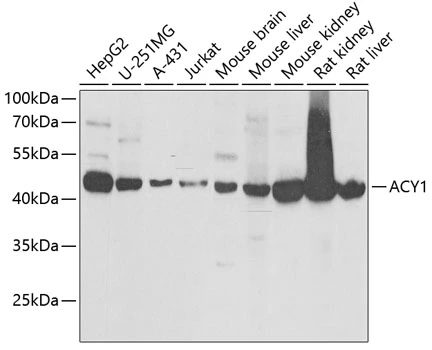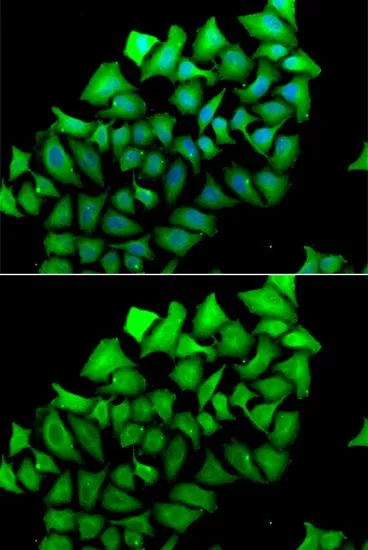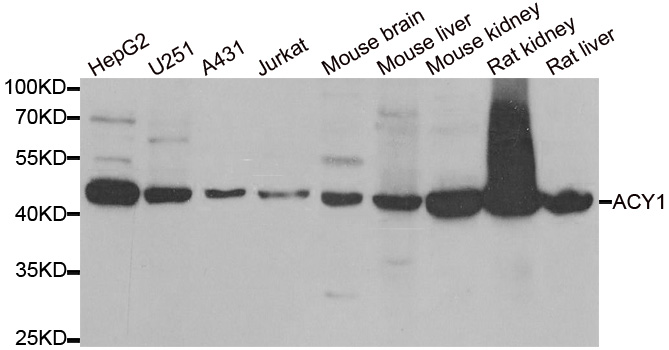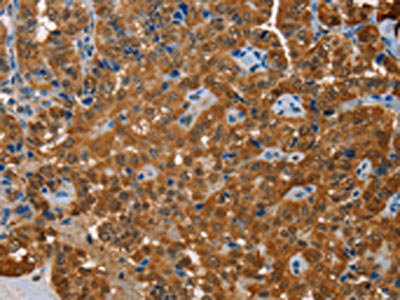
WB analysis of various sample lysates using GTX55508 Aminoacylase 1 antibody. Dilution : 1:1000 Loading : 25microg per lane
Aminoacylase 1 antibody
GTX55508
ApplicationsImmunoFluorescence, Western Blot, ImmunoCytoChemistry
Product group Antibodies
TargetACY1
Overview
- SupplierGeneTex
- Product NameAminoacylase 1 antibody
- Delivery Days Customer9
- Application Supplier NoteWB: 1:500 - 1:2000. ICC/IF: 1:10 - 1:100. *Optimal dilutions/concentrations should be determined by the researcher.Not tested in other applications.
- ApplicationsImmunoFluorescence, Western Blot, ImmunoCytoChemistry
- CertificationResearch Use Only
- ClonalityPolyclonal
- ConjugateUnconjugated
- Gene ID95
- Target nameACY1
- Target descriptionaminoacylase 1
- Target synonymsACY-1, ACY1D, HEL-S-5, aminoacylase-1, N-acyl-L-amino-acid amidohydrolase, acylase, epididymis secretory protein Li 5
- HostRabbit
- IsotypeIgG
- Protein IDQ03154
- Protein NameAminoacylase-1
- Scientific DescriptionThis gene encodes a cytosolic, homodimeric, zinc-binding enzyme that catalyzes the hydrolysis of acylated L-amino acids to L-amino acids and an acyl group, and has been postulated to function in the catabolism and salvage of acylated amino acids. This gene is located on chromosome 3p21.1, a region reduced to homozygosity in small-cell lung cancer (SCLC), and its expression has been reported to be reduced or undetectable in SCLC cell lines and tumors. The amino acid sequence of human aminoacylase-1 is highly homologous to the porcine counterpart, and this enzyme is the first member of a new family of zinc-binding enzymes. Mutations in this gene cause aminoacylase-1 deficiency, a metabolic disorder characterized by central nervous system defects and increased urinary excretion of N-acetylated amino acids. Alternative splicing of this gene results in multiple transcript variants. Read-through transcription also exists between this gene and the upstream ABHD14A (abhydrolase domain containing 14A) gene, as represented in GeneID:100526760. A related pseudogene has been identified on chromosome 18. [provided by RefSeq, Nov 2010]
- Storage Instruction-20°C or -80°C,2°C to 8°C
- UNSPSC12352203








